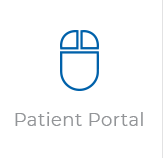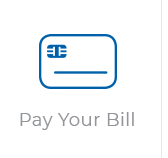How Do I Perform A Breast Self-Exam?
To perform a breast self-exam, follow the steps described below.
In the mirror
- Stand undressed from the waist up in front of a mirror in a well-lit room. Look at your breasts. Don't be alarmed if they do not look equal in size or shape. Most women's breasts are not. With your arms relaxed by your sides, look for any changes in size, shape, texture, or skin. Look for skin puckering, dimpling, sores, or discoloration. Inspect your nipples and look for any sores, peeling, or change in the direction of the nipples.
- Next, place your hands on your hips and press down firmly to tighten the chest muscles beneath your breasts. Turn from side to side so you can inspect the outer part of your breasts.
- Then bend forward toward the mirror. Roll your shoulders and elbows forward to tighten your chest muscles. Your breasts will fall forward. Look for any changes in the shape or contour of your breasts.
- Now, clasp your hands behind your head and press your hands forward. Again, turn from side to side to inspect your breasts' outer portions. Remember to inspect the border underneath your breasts. You may need to lift your breasts with your hand to see this area.
- Check your nipples for discharge (fluid). Place your thumb and forefinger on the tissue surrounding the nipple and pull outward toward the end of the nipple. Look for any discharge. Repeat on your other breast.
In the shower
- Now it's time to feel for changes. It is helpful to have your hands slippery with soap and water. Check for any lumps or thickening in your underarm area. Place your left hand on your hip and reach with your right hand to feel in the left armpit. Repeat on the other side.
- Check both sides for lumps or thickenings above and below your collarbone.
- With hands soapy, raise one arm behind your head to spread out your breast tissue. Use the flat part of your fingers from the other hand to press gently into the breast. Follow an up-and-down pattern along the breast, moving from bra line to collarbone. Continue the pattern until you have covered the entire breast. Repeat on the other side.
Lying down
- Next, lie down and place a small pillow or folded towel under your right shoulder. Put your right hand behind your head. Place your left hand on the upper portion of your right breast with fingers together and flat. Body lotion may help to make this part of the exam easier.
- Think of your breast as a face on a clock. Start at 12 o'clock and move toward 1 o'clock in small circular motions. Continue around the entire circle until you reach 12 o'clock again. Keep your fingers flat and in constant contact with your breast. When the circle is complete, move in one inch toward the nipple and complete another circle around the clock. Continue in this pattern until you've felt the entire breast. Make sure to feel the upper outer areas that extend into your armpit.
- Place your fingers flat and directly on top of your nipple. Feel beneath the nipple for any changes. Gently press your nipple inward. It should move easily.
Repeat these steps on your other breast.
What Do I Do If I Find a Lump in my Breast?
See your doctor if you discover any new breast changes, changes that persist after your menstrual cycle, or other changes that you are concerned about. Conditions that should be checked by a doctor include:
- An area that is distinctly different from any other area on either breast
- A lump or thickening in or near the breast or in the underarm that persists through the menstrual cycle
- A change in the size, shape, or contour of the breast
- A mass or lump, which may feel as small as a pea
- A marble-like area under the skin
- A change in the feel or appearance of the skin on the breast or nipple (dimpled, puckered, scaly, or inflamed)
- Bloody or clear fluid discharge from the nipples
- Redness of the skin on the breast or nipple







